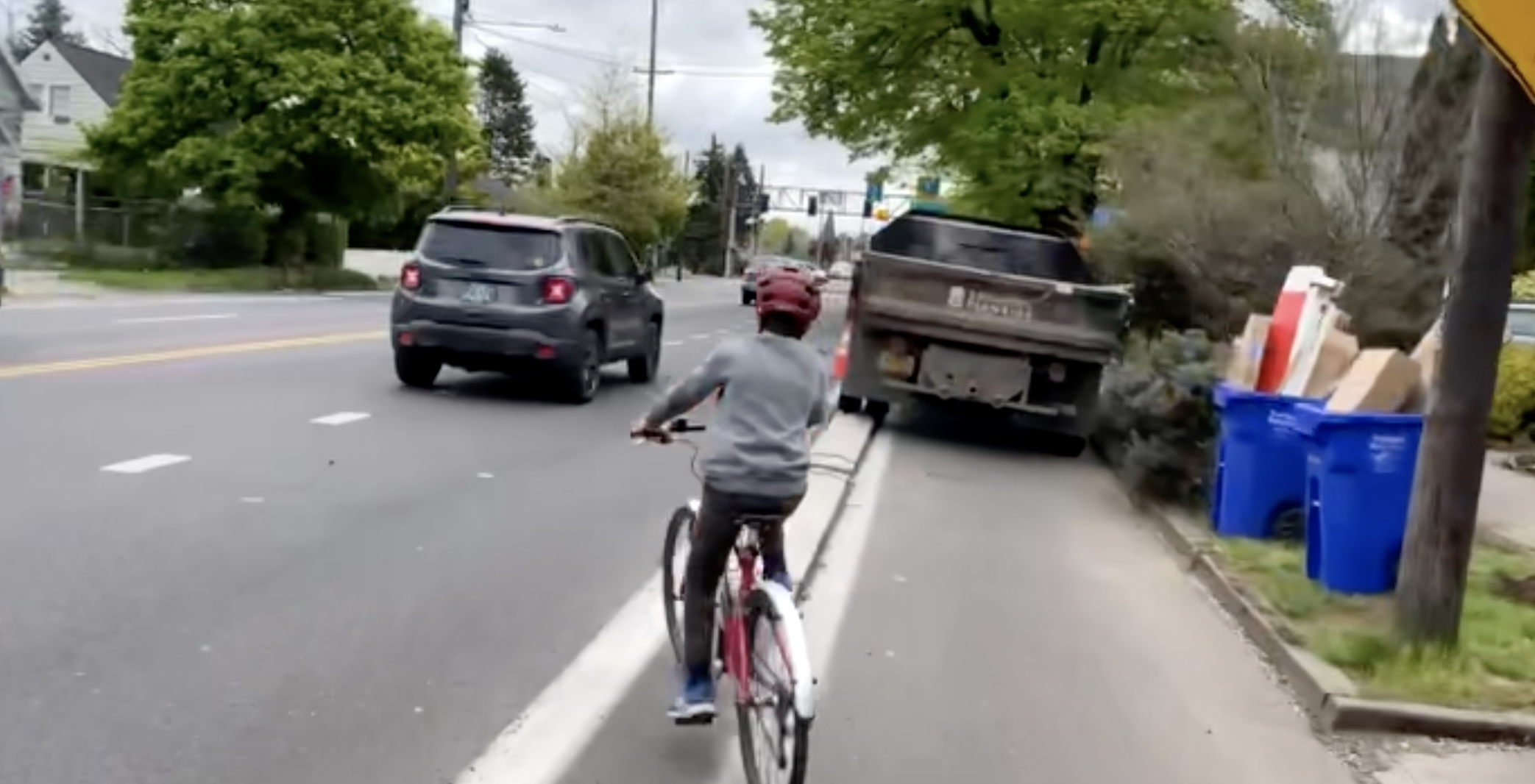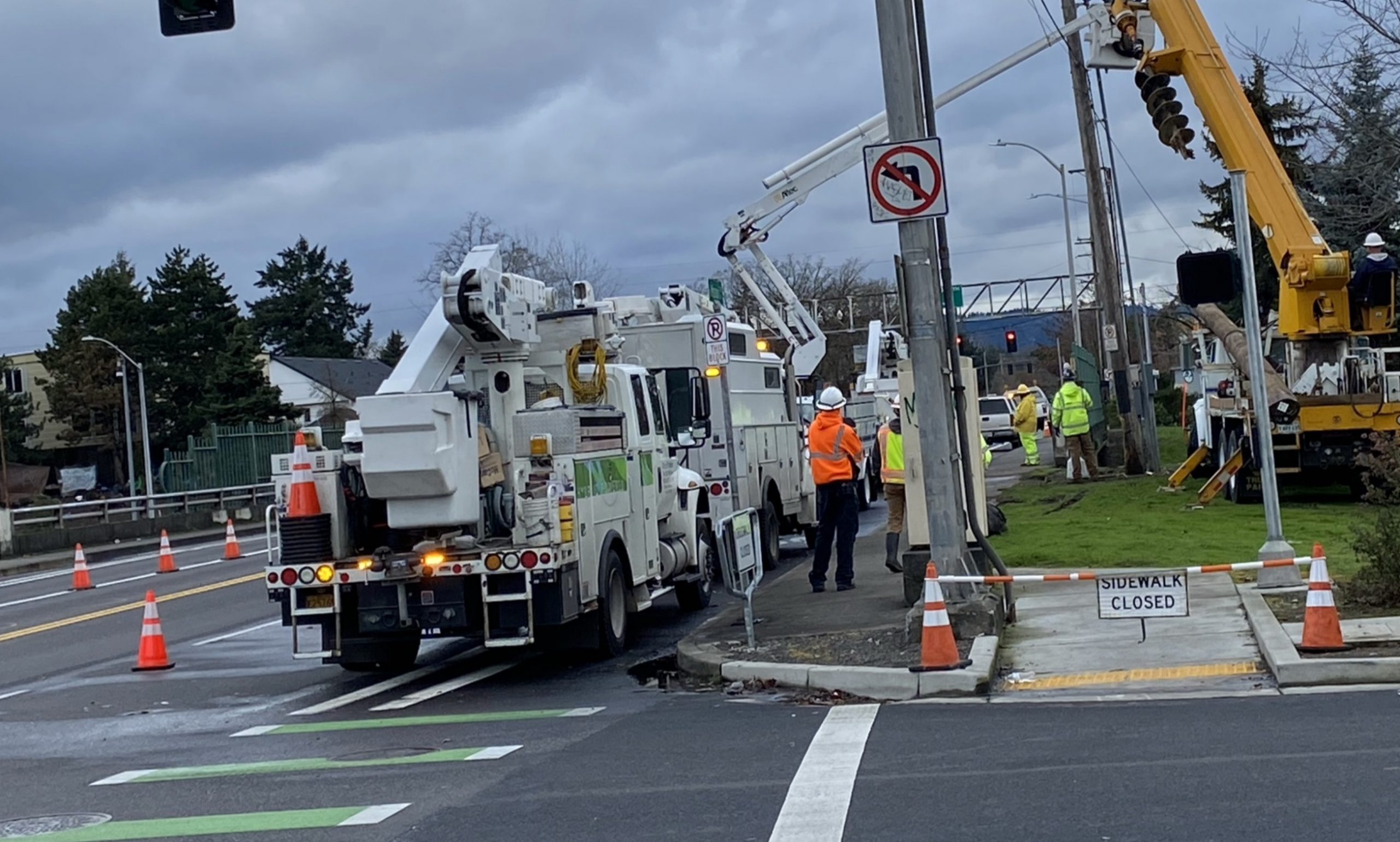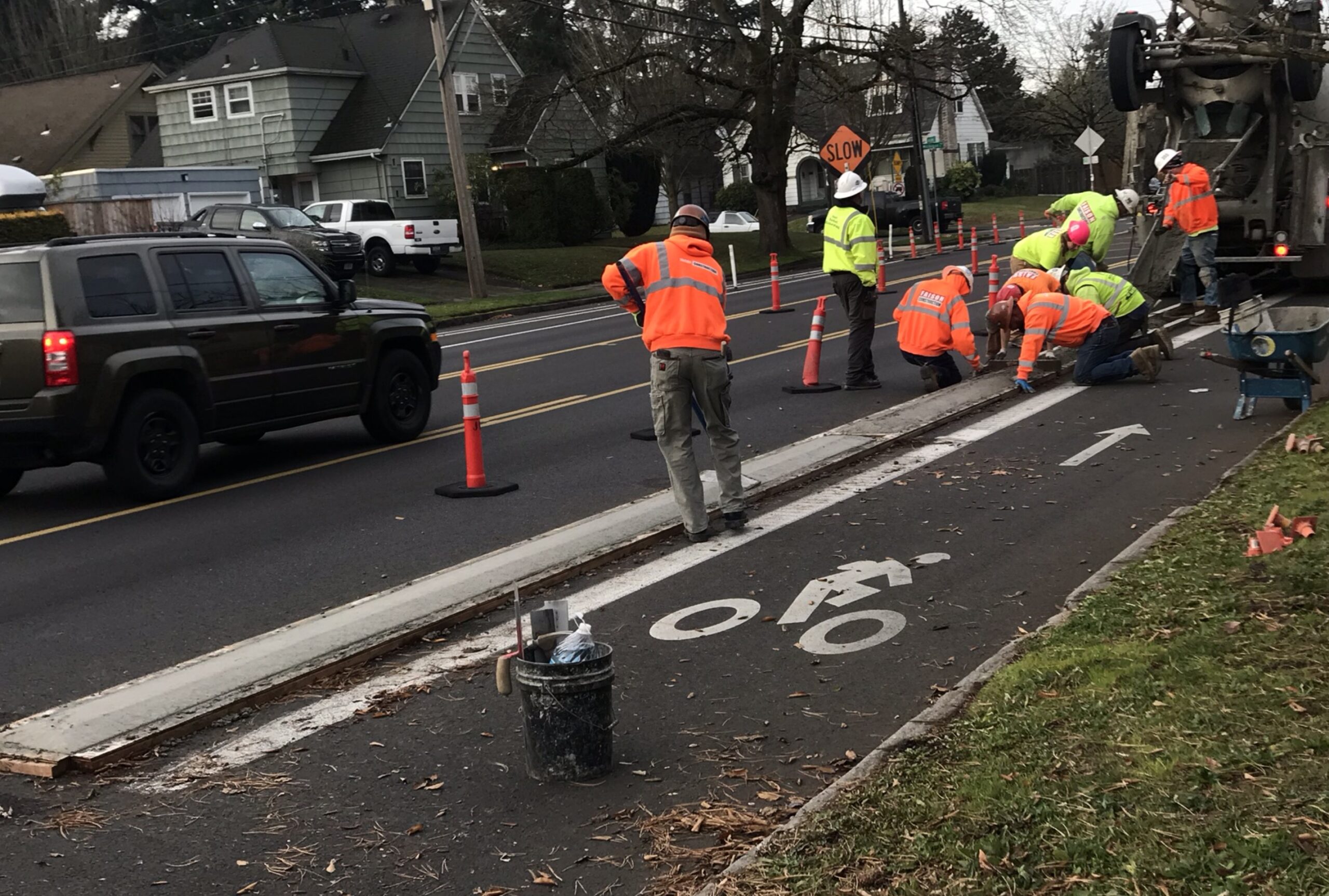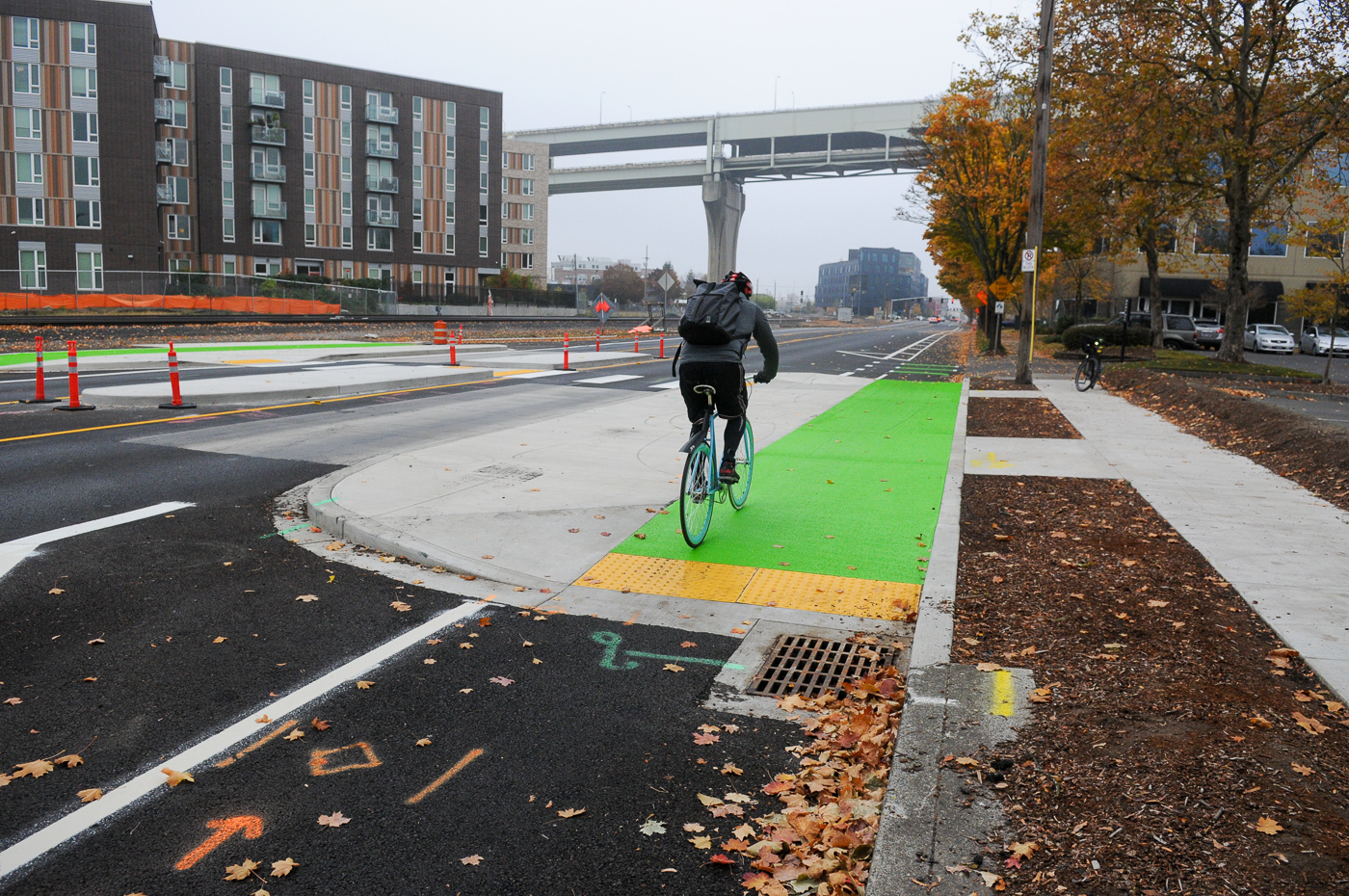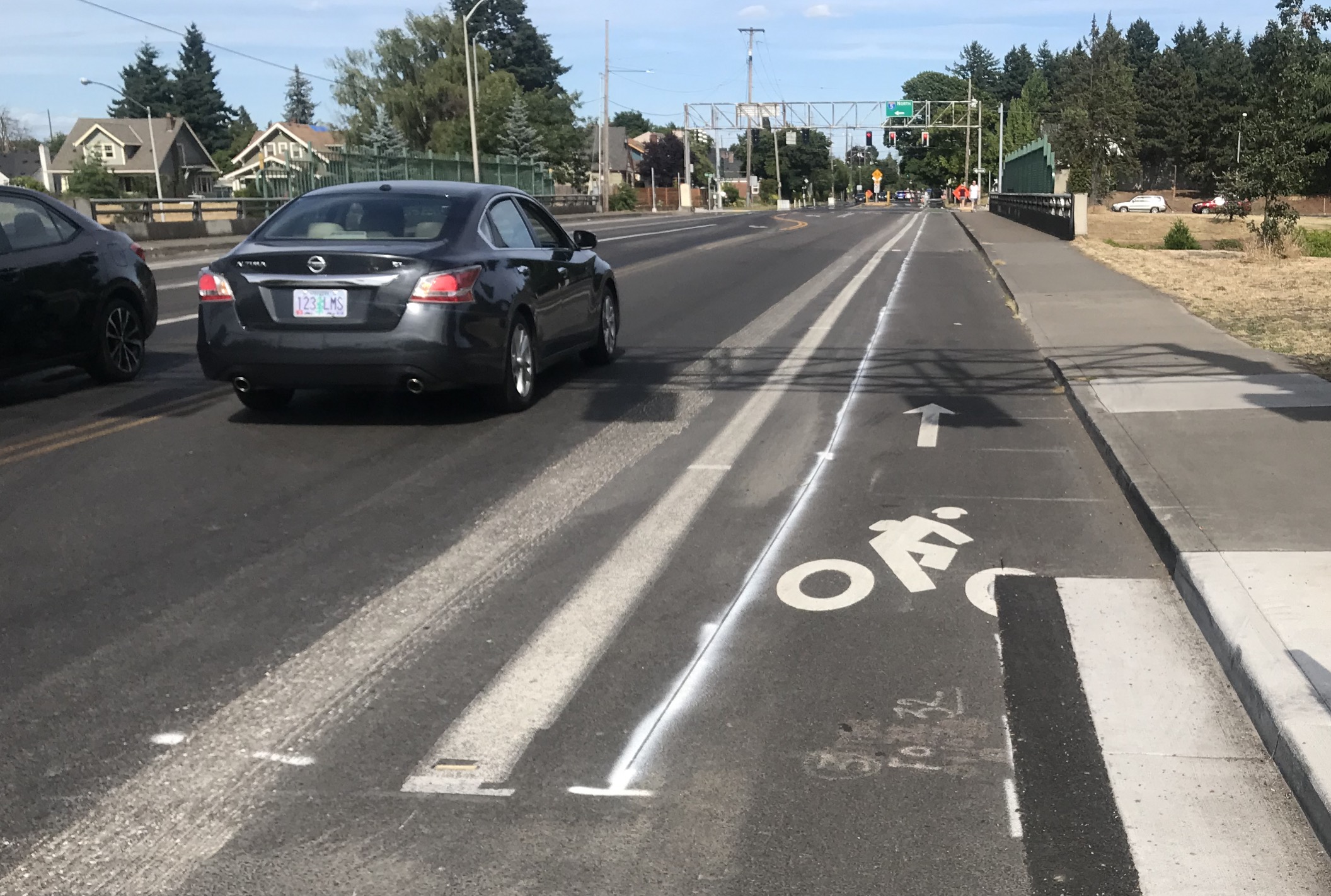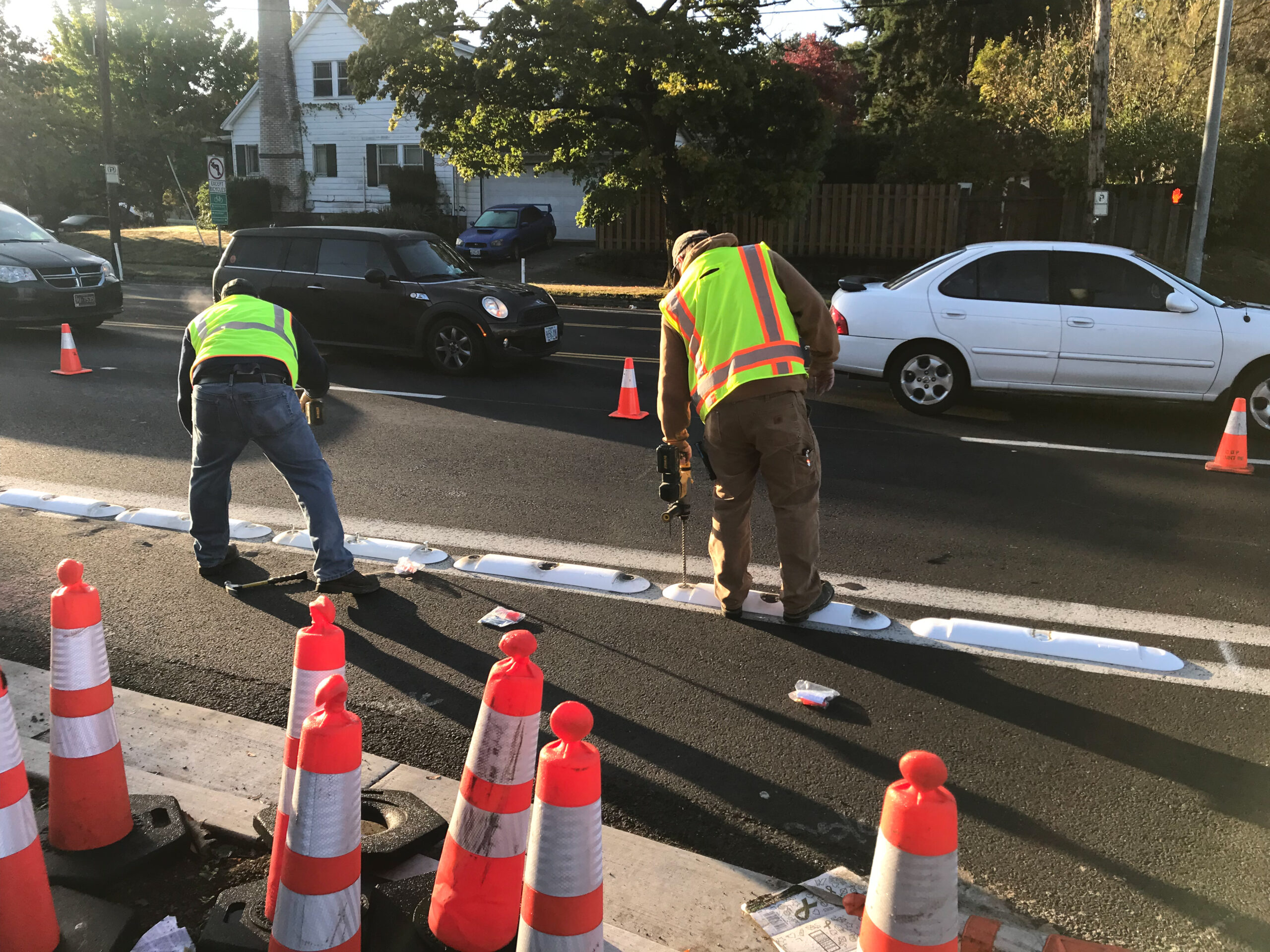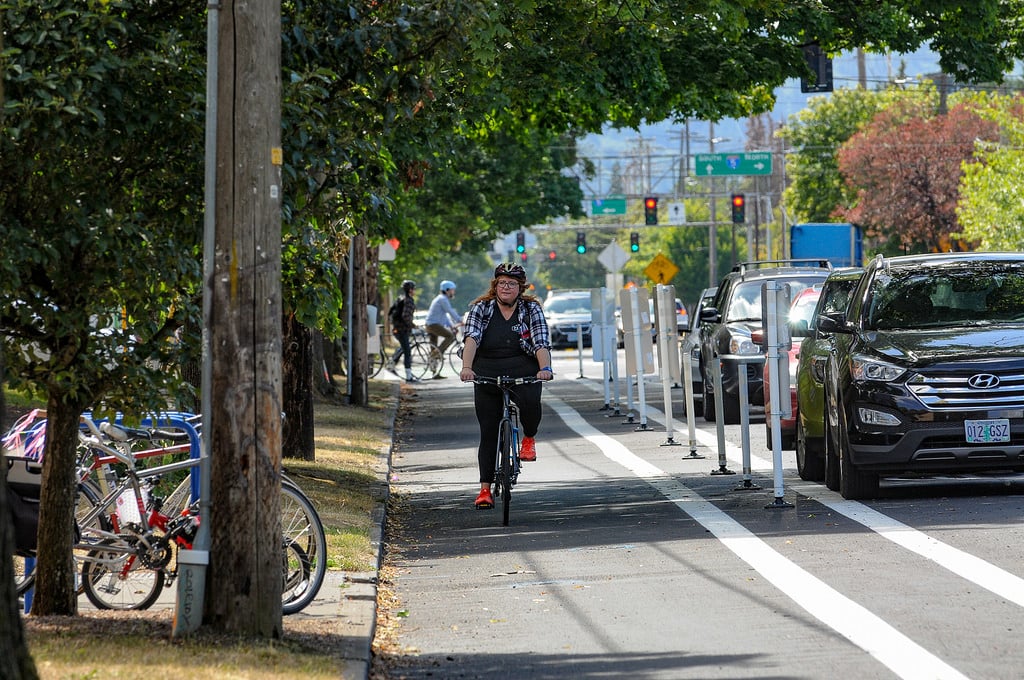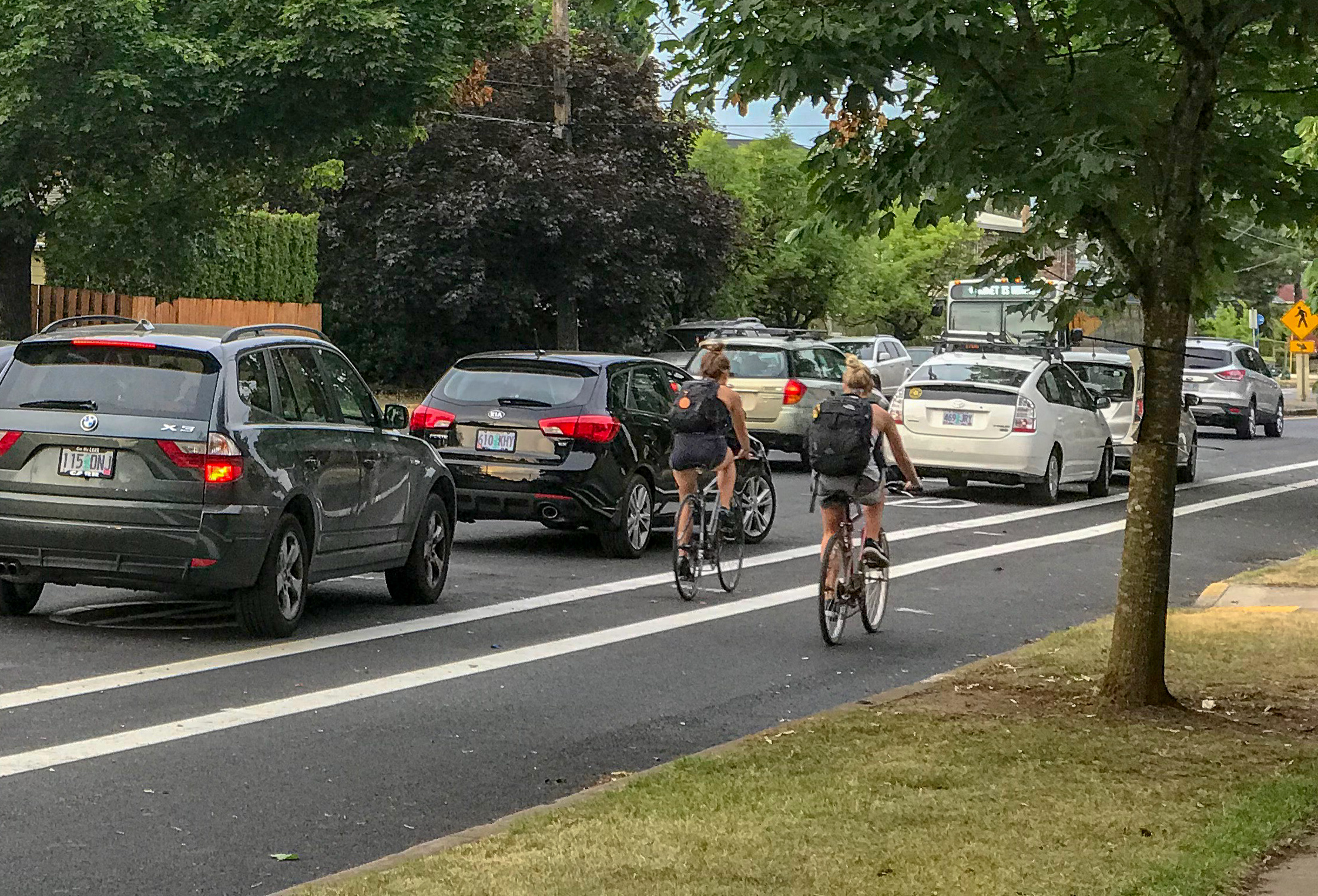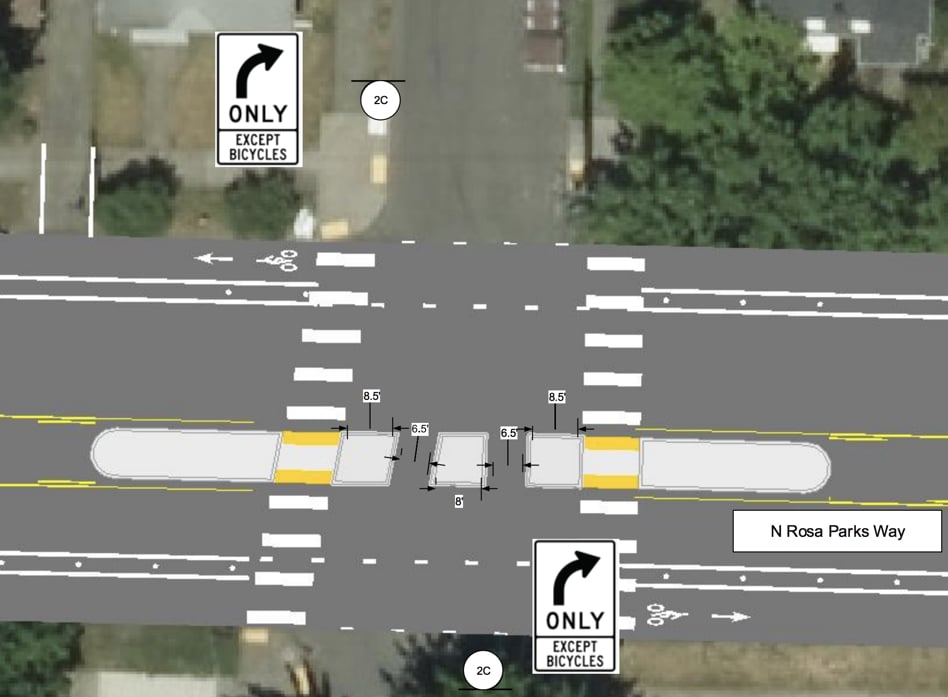north rosa parks way
ODOT will shrink bike lanes on North Rosa Parks Way
10 months after the City of Portland widened the bike lanes on North Rosa Parks Way (where it crossing Interstate 5) the Oregon Department of Transportation wants to narrow them.
Portlanders set out red cups to push for more protection while cycling
Paint is not protection. That’s the message from people across America today who are taking part in the Red Cup Project. Inspired by the tragic death of Washington D.C. cycling advocate Dave Salovesh (@darsal), the red cups are a quick and cheap way to define space and show how relatively little effort it takes to … Read more
City installs plastic curbs, wands to protect bikeway at I-5 freeway on-ramp
We must aggressively defend biking space.
Striping complete, concrete protection still to come for North Rosa Parks Way
The latest on this neighborhood connector.
City will restart N Rosa Parks Way project this weekend
Should be done by next week.
What’s going on with the North Rosa Parks Way project?
No. It’s not normal.
PBOT proposes more robust median at N Rosa Parks and Villard
Please contact the project manager with your thoughts.



